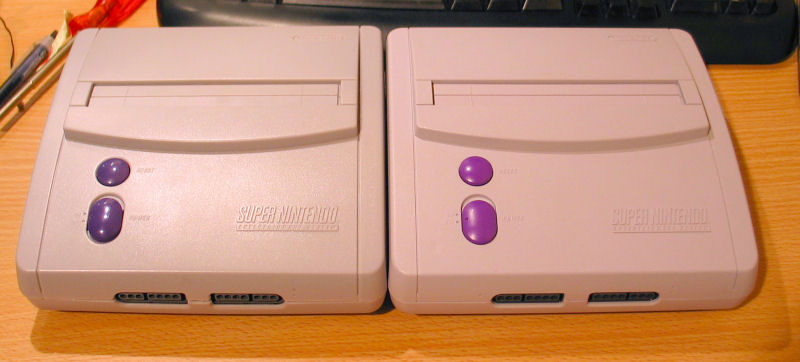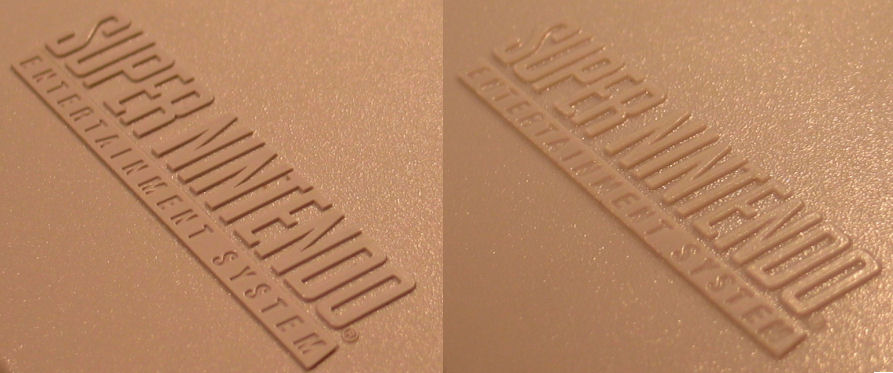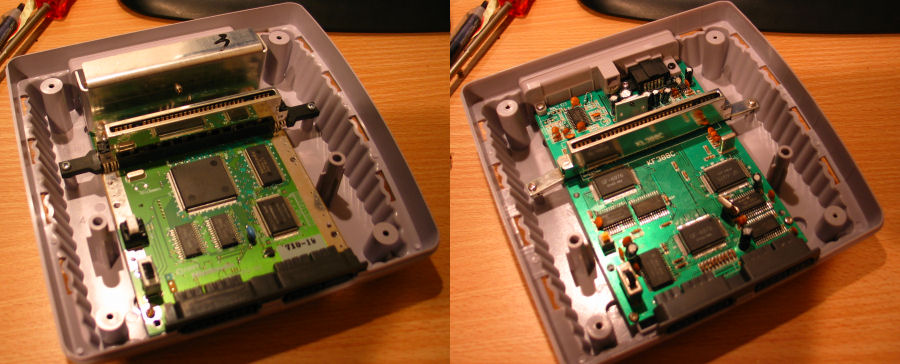Table of Contents
How to recognize a counterfeit SNES
In the past counterfeits were easily recognized. Famicoms were labeled Happily Computer instead of Family Computer, or the system would look completely different. Sometimes a company will produce legitimate goods that look like shoddy knockoffs, like TecToy's Sega hardware or Samsung's Saturn. Rarely though do you find a company producing pirated hardware that is intended to look like the original.
Recently a forum thread mentioned the existence of pirated Super NES units, and a kind forum member has sent me their system. It's clever, it looks a lot like the real thing, and for someone who's not familiar with Nintendo's quality hardware, or hasn't a real SNES to compare it to, it might be hard to recognize it as a fake.
Here then is a guide to determining if your SNES is real or fake.
Things to check
First of all, ALL Nintendo-made SNES systems use external-line-head (There is no such thing as 'External Torx'), or 'gamebit' screws. If you see regular old Phillips, or cross-head screws, then it's a fake. If that's not enough to convince you, examine the plastic. A real SNES is a lovely grey, but a fake will be almost translucent near the edges. Also, a real SNES is made with attention to detail and is usually very high quality - a fake will have seams that don't line up right, stickers with bubbles under them, and in the case of this clone, connectors that are way too tight, cartridge flaps that are shockingly stiff and buttons that are glossy instead of textured.
Visual Aids
 Consider these two systems. They look very much alike, but the one on the left is a fake.
Consider these two systems. They look very much alike, but the one on the left is a fake.
(From now on the one on the right is fake, someone should probably fix that..)
 Shiny buttons look cheap, they squeak when moved, and they're a darker colour than they should be.
Shiny buttons look cheap, they squeak when moved, and they're a darker colour than they should be.
 Never mind that the pirated label is coming off, have a look at Mario. There's a distinct lack of detail compared to the original.
Never mind that the pirated label is coming off, have a look at Mario. There's a distinct lack of detail compared to the original.
 Notice in the pirated label how the Nintendo logo looks wrong: it uses a normal-looking font instead of the original Nintendo one. Ditto for the text, and notice how the power specs aren't bold like they should be.
Notice in the pirated label how the Nintendo logo looks wrong: it uses a normal-looking font instead of the original Nintendo one. Ditto for the text, and notice how the power specs aren't bold like they should be.
 The pirated SNES has softer edges, probably since the pirates made their mold from a real SNES. It's like photocopying, the fake is never as clear as the original. There are no shadows because there are no sharp corners, just rounded ones.
The pirated SNES has softer edges, probably since the pirates made their mold from a real SNES. It's like photocopying, the fake is never as clear as the original. There are no shadows because there are no sharp corners, just rounded ones.
 The fake SNES has no RF shielding, the cart port is actually broken because the posts it's screwed into are too short (and they are both different sizes!), and there's a very small heat sink for the power regulator. There's a lot more chips; the fake probably uses a normal (though unlicensed) CPU, where the real SNES has a single-chip design for everything but the RAM, sound chip and video encoder.
The fake SNES has no RF shielding, the cart port is actually broken because the posts it's screwed into are too short (and they are both different sizes!), and there's a very small heat sink for the power regulator. There's a lot more chips; the fake probably uses a normal (though unlicensed) CPU, where the real SNES has a single-chip design for everything but the RAM, sound chip and video encoder.
You can also tell a fake by the box. A real SNES has a small red area with a hole, where you or the retailer can view the serial number without opening the box. The pirate systems have the same red area, but no hole.
Q & A
Q: Leaving one important question, are there clones of the Super Famicom Jr. as well?
A: The Super Famicom Jr. is rare enough that most people will never see one. If the clones were available, they were just as rare. (Not much of an answer, anyone else?)
Q: What's the compatibility like?
A: It seems to be perfect. If there are differences I don't notice them. Only tried a handful of games however.
Edited: there are some games that will detect the system as incompatible region and won't run, but few of them.
